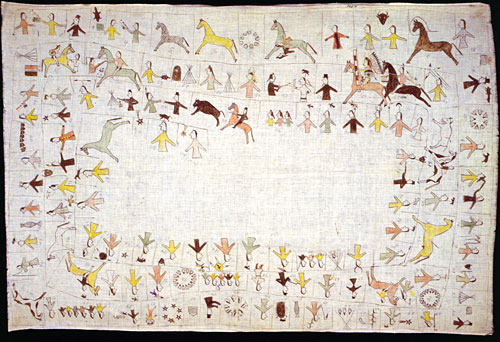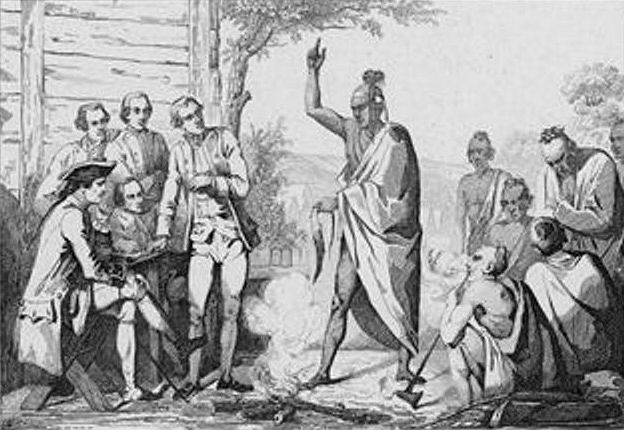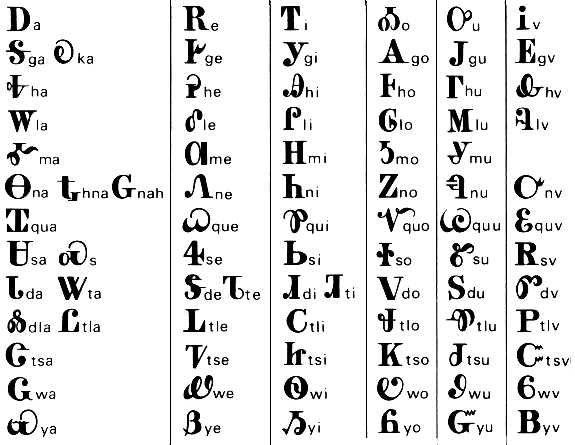|
|
|
Spoken & Written Cultures |
Broadly, spoken or oral cultures align with traditional cultures; written cultures tend to be modern.
But relations between such cultures or within any culture shouldn't be simplified—all cultures adapt, share, and exchange, or die.
![]()
Did American Indians have "literature?"
Educators are generally affirming people, so they may simply say "yes, of course" in order to be careful not to disrespect or exclude an already-marginal group like the Indians.
So our short answer will be "yes," but return to the question for the sake of analyzing its terms and building the case.
terms of discussion:
oral literature or oral culture, a. k. a. "orality"
Ong, Walter J. Orality and Literacy: The Technologizing of the Word (London: Routledge, 1982)
9
Human beings in primary oral cultures, those untouched by writing in any form,
learn a great deal and possess and practice great wisdom, but they do not
`study.'
They learn by apprenticeship . . . by discipleship . . . by listening, by
repeating what they hear, by mastering proverbs and ways of combining and
recombining them . . . not by study in the strict sense
11
secondary orality of present-day high-technology culture, in which a new orality
is sustained by telephone, radio, television, and other electronic devices that
depend for their existence and functioning on writing and print.
7
Of the some 3000 languages spoken that exist today only some 78 have a
literature
alternative term: orality > "spoken literature" or "spoken-word literature"
For human beings, speech is natural, but writing is cultural and learned (or not).
term: Literature
source: Webster's New Collegiate Dictionary
etymology (i. e., derivation or sources of word):
English "literature"
from French "litterature"
from Latin "litteratura": learning, grammar, writing
from Latin "littera or litera": letter (as in a letter of the alphabet?)
cf. "literacy," "literate," "literal" or "literally"
definitions of "literature":
1. Rare. Literary culture.
2. 2. Production of literary work, esp. as an occupation
3. Literary productions as a collective body; as
a. The total of preserved writings belonging to a given language or people
b. Specif., that part of it which is notable for literary form or expression; belles-lettres [ ]
c. The body of writings having to do with a given subject; as, the literature of magic [or, the literature of flight, or depression, or the holocaust]
Can these terms be applied to American Indian culture?
Generally speaking, American Indians did not have writing as the concept is here embodied—that is, no American Indian culture made marks as ways of representing particular words, as in
word: cat
sound: /kaet/
meaning:
|
|
|
|
|
Lakota winter
counts, pictorial calendars that the Lakota (Sioux) kept
|
|
Lakota winter
counts, pictorial calendars that the Lakota (Sioux) kept
to mark the
passage of time, reckoned in winters. Each year is named
for a notable event,
such as "The Year the Stars Fell." This was the Leonid meteor storm of
November 1833, a remarkable display visible throughout
much of North America.
Compare "hieroglyphs"
 Egyptian hieroglyphic
Egyptian hieroglyphic
 hieroglyphic
act
hieroglyphic
act

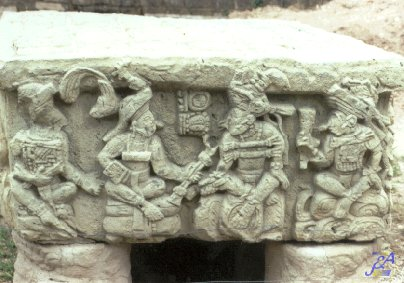
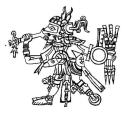 Aztec
hieroglyphic
Aztec
hieroglyphic
wampum--produced primarily by Northeastern North
American Indians,
especially the Algonquian and Iroquois peoples in New England and
around the Great Lakes region
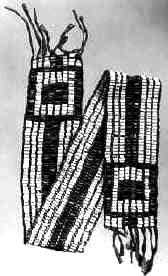
Wampum was made from parts of clam shells found on Atlantic coast.
The Algonquian peoples (e. g., the Powhatan [Pocahontas],
Mohegan,
Massachusett, Delaware, etc.) used wampum primarily as currency and
gifts of exchange.
The Iroquois Confederacy (Mohawks, Oneidas, Onondagas,
Cayugas,
and Senecas, and later the Tuscaroras). These were culturally and
linguistically similar tribes who were organized into a large political unit
"Iroquois" is a French name; this people's own
name for themselves is
Hau de no sau nee (ho dee noe sho nee), meaning People Building
a Long House
Even before the formation of the
confederation, the Iroquois families lived
in the distinctive bark-covered rectangular structure known as the long house.
When the prophet Deganawidah and his disciple
Hiawatha
founded (c.1570)
the confederacy (to eliminate incessant intertribal warfare and to end
cannibalism), this dwelling became the symbol of the Five Nations.
The Onondagas became the keepers of the
Iroquois's wampum belts.
Interpretation of the belts was passed down orally from generation to
generation.
wampum belts as record of Indian Magna Carta
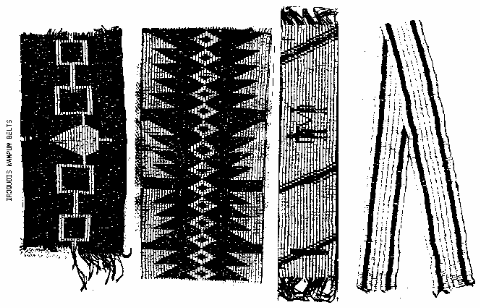
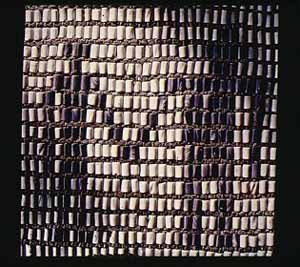
Is wampum writing? Do the Indians have literature?
At the very least it's a kind of writing, but also some differences.
Writing such as we practice in Literature courses or European-American courts of law is alphabetic or phonetic writing.
The marks represent sounds which directly represent our speech, which represents whatever we're talking about
word: cat
sound: /kaet/
meaning:
|
|
In contrast, wampum, winter counts, and hieroglyphs are *not* phonetic writing but "pictorial writing."
Instead of representing *sounds*, that is, they represent pictures, so that the Egyptian hieroglyphic for "cat" is:
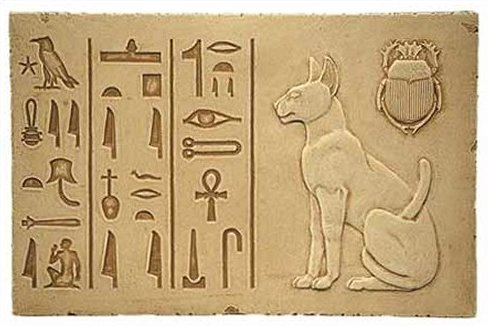
Not the representation of a sound but of a visual image, that is. In fact, speakers of different languages would look at this image and say different words for cat; e. g., "cat," "le chat," "el gato."
Therefore, compared to phonetic writing, pictorial writing tends not to be as stable a representation of exact words.
Zitkala-Sa, American Indian Stories:
15 stars peeped down upon me > 16 tattooed star (cf. wampum)
16 secret signs > story [wisdom culture x information culture]
Consequences:
As with Onondaga elders, a spoken or oral interpretation has to accompany the passing on of a wampum belt.
Final observations:
5c. To regard
literacy as the primary code of modern existence and a key or path to
empowerment.
American Indians both assimilate to and resist the written word. Some oral aspects continue. Therefore American Indian literature is both written and spoken.
Literature as a "field of speech and writing" without definite boundaries between the two.
American Indian spoken literature may still appear in written form as emphasis on poetry (or song or chant) and storytelling.
|
|
|




